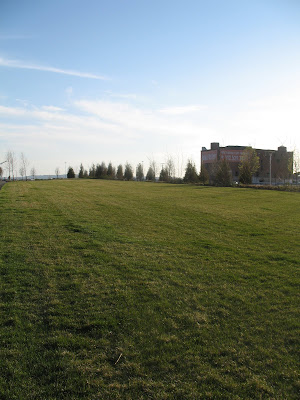many times during a school year, i get the urge to make a series of changes to my classroom. these changes can take many forms. they can be simple changes, such as a slight change in schedule, a rearrangement of a couple of areas in the classroom, or the addition of some new work to the shelves. they could be mid-level changes, such as changing the morning routine, adding a new shelf to the classroom, or introducing a new rule, such as "
you can't say you can't play". or they could be more major changes, like altering the daily schedule, rearranging the classroom, or introducing a new area of the curriculum.
children are sensitive to change, and disrupting the daily routines they have so carefully cultivated at school can throw off the equilibrium of the classroom. it's important to make sure that any change to the classroom environment, curriculum, or daily routine suit the childrens' needs at the time.
our
neighborhood walk provided the boost of energy and inspiration i needed to get started on the classroom rearrangements i had in mind. i'd been so pleased with the initial arrangement of my classroom that, for the first time in several years, i hadn't felt the need to make any changes since september. by late april, however, it was clear that the children had grown too accustomed to the arrangement of shelves, tables, and chairs. instead of steadily climbing and changing, their work seemed a bit stuck in place. it was time to shake things up.
i'll refer to the first routine i wanted to change as the "art clump". the children had taken to gathering around the art shelf at the beginning of morning work time, positioning themselves at the largest table in the classroom (also at the center of the classroom) , and camping out for an entire work period. what was once a site of fresh and imaginative work had now grown into more of a social gathering area. as art work and social interaction are both very important elements of the preschool curriculum, my goal was not to put an end to this part of the children's day but to alter it so as to challenge and extend these experiences.
the other goal of the rearrangement was to encourage more language work. this had been an all too often overlooked area of the classroom, perhaps in part due to the language shelf's location on the outskirts of the room. thus, the necessary rearrangement was apparent - switch the language shelf with the art shelf. putting art on the outskirts wouldn't be a problem, because children would flock to it anywhere. placing the language shelf squarely in the center of the room made it more visible, more cozily situated, and more social. voila!
the new art space:

the new language space:

not only did the changes work - the children's art flourished and changed, and language work began in earnest - but the classroom felt larger and more open.
a breath of fresh air:





















































